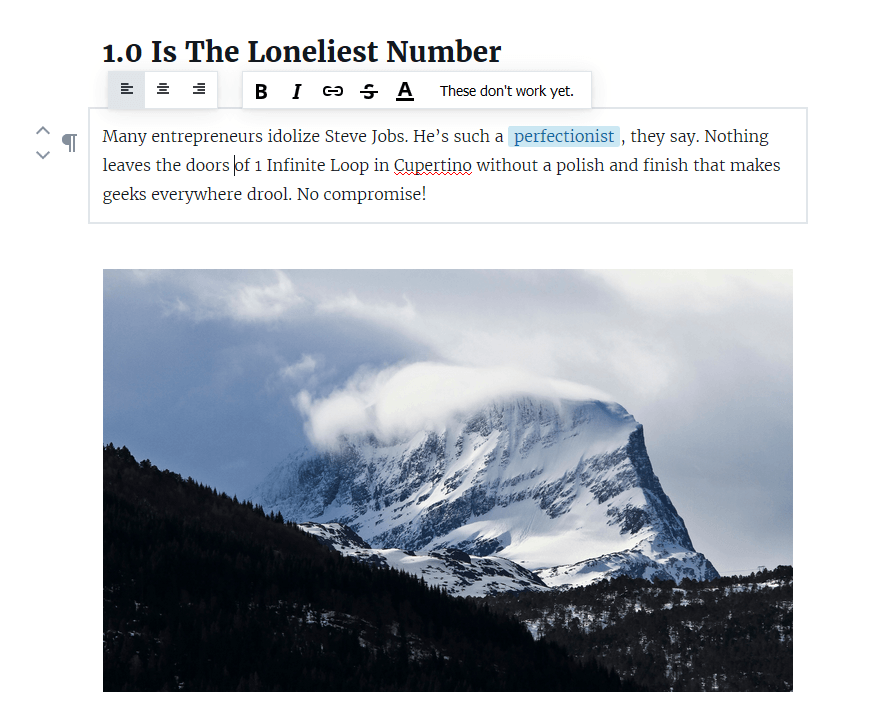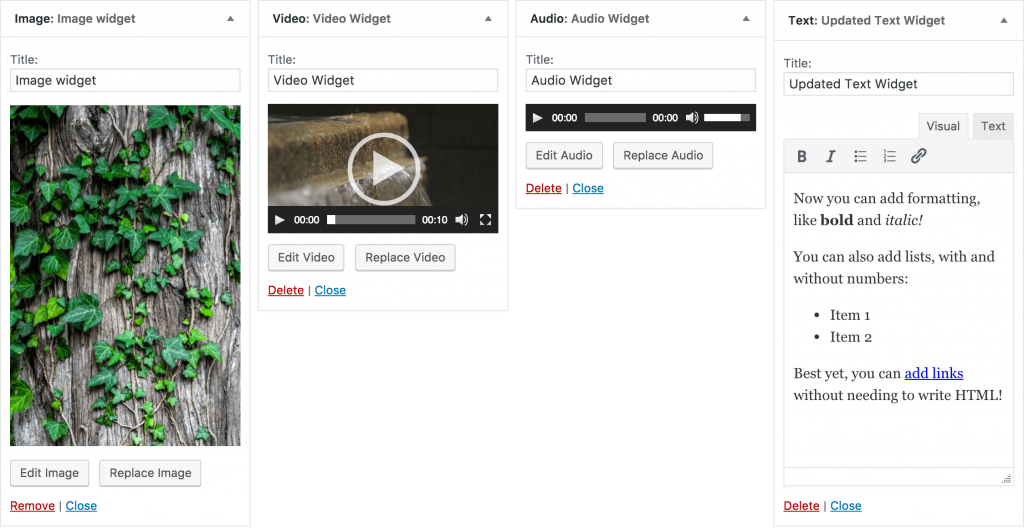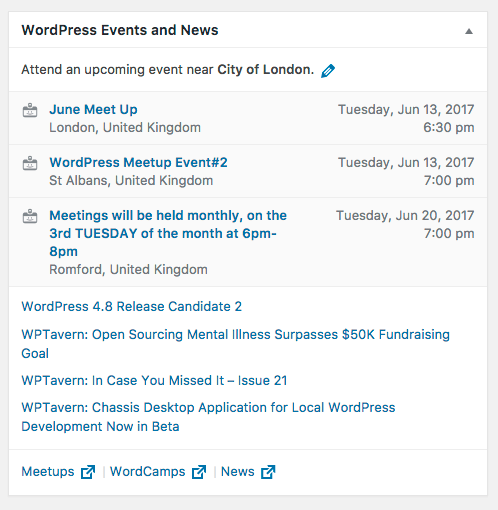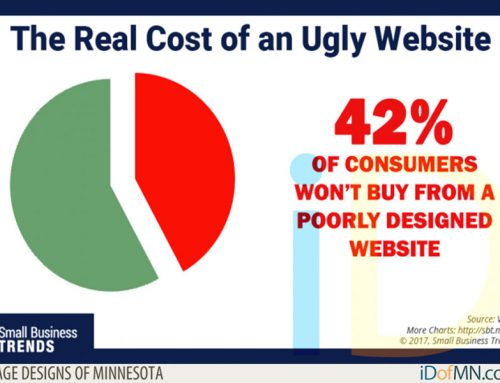WordPress 4.8 is the first major release (or, “update to WordPress”) of 2017 and the first since WordPress co-founder and Automattic CEO Matt Mullenweg announced a new direction for releases: the previous directive of three major releases per year is out, and a new feature-focussed release schedule is in, with no goal for the number of releases per year and instead releases going out whenever they’re ready.
Yet, WordPress 4.8 isn’t a big feature-focussed release. Instead, it’s comparatively minor update which introduces a handful of new features and paves the way for future features.
WordPress 4.8 is due for release on June 8th. There have been plenty of other great articles showing off what’s to come in WordPress 4.8, so I want to do something a little different: not just show off what’s to come in the new update, but also discuss the implications for the future of WordPress. Let’s get right to it.
Taking on Squarespace and Wix: .com ads
Let’s start with something not in or technically related to the 4.8 release but which can frame the big picture here: the recent WordPress.com TV ads. These stem from comments from Matt late last year that WordPress needs to focus more on marketing itself in order to compete with the hundreds of millions of dollars spent by the likes of Wix and Squarespace:
“Advertising is just a product, just like an interface is, just like a website is, just like anything else… These external threats and proprietary threats are far bigger than any intra-WordPress open source threats,” Mullenweg said. “We can grow the pie far faster than we can take shares from people in the same pie.”
The TV ads have been trialled in six markets and tell stories of small businesses in Detroit who have broadly benefitted from having a WordPress website, although almost no time is spent telling the viewer about WordPress: these are emotive, story-driven ads which feel similar to something you’d see from Wix or Squarespace.
The message from these ads is you should make a website for your business so that these good things happen – and WordPress is a good place to do this, rather than “you should choose WordPress because of these features”. Whilst these ads have come under fire and admittedly are mildly confusing, in the context of competing with Wix and Squarespace they make a lot more sense.
What’s more, in the context of targeting people who would benefit from a website but don’t necessarily have the technical expertise to set up even a mildly complicated WordPress theme (and bear in mind Squarespace is actually really easy to use), focussing on the ease of use of WordPress core makes more and more sense.
This is the context in which you should view the 4.8 update: delivering some quick ease-of-use gains now and paving the way for future ease-of-use gains in the future. So, what’s actually new?
Incremental editor improvements pave the way for the Gutenberg editor
Probably the biggest feature in WordPress 4.8 is the update to the content editor and “paving the way” for the next generation of WordPress’ content editor.
WordPress uses a content editor called TinyMCE, and 4.8 sees the addition of new features TinyMCE into WordPress. These generally make the writing experience in WordPress more pleasant: adding and editing links is more intuitive and the visual editor is generally more functional.
The link improvements will be a relief to anyone who writes or edits a lot of content in WordPress itself; prior to 4.8 it was difficult to edit content which already contained a link as the link wouldn’t expand if you were editing from before the last letter (most edits require deleting the last letter, so this would’t apply). With 4.8 you can happily edit hyperlinked text and won’t experience any problems, even if you’re adding extra content to the end. Intuitive!
Gutenberg is the codename for WordPress’ new content editor. The name obviously harks back to the man who literally changed the world by inventing the mass-production printing press. Similar revolutionary changes are envisaged with Gutenberg: the aim is to completely revamp the publishing experience in WordPress and produce something much more modern and intuitive than is offered at present.

A prototype of the new Gutenberg editor for WordPress.
Gutenberg is currently being prototyped as block based and it looks amazing. Thiscan really move the needle on achieving the goals of bringing WordPress to a wider audience, and 4.8 is credited as paving the way for Gutenberg’s inclusion in WordPress.
As Karol rightly commented, I’m not totally on board with specifically how 4.8 paves the way for Gutenberg; Matt’s comments that “we’ll get some great improvements in the hands of users quickly, and we can return focus back to Gutenberg (which is coming along swimmingly)” suggests “paving the way” may just be freeing up developer time and focus and there may not be anything concrete in 4.8. Still, I’m very excited for Gutenberg and its possibilities, and anything which moves the process along is a good thing.
New widgets adding most-wanted functionality
The second most interesting feature in WordPress 4.8 is a bunch of new widgets. These make adding text, images, videos and audio to any widget areas such as sidebars much easier and will make life easier for mainstream users.
Here are the four new widgets you’ll get with WordPress 4.8:
- New Text Editor widget: previously WordPress’ text widget only supported plain text and HTML, leaving novices unable to style text, add links or add media. 4.8 adds the TinyMCE text editor UI (the same as found on the post editor screen) to the text widget, making it easier to add text in a widget. Widgets now also support shortcodes, a presumably frustrating shortcoming seen before.
- New Image widget: another simple widget which will make life easier for users, this one lets you add images to your sidebar or any other widget area.

The four new widgets included in WordPress 4.8. Image from the Welcome screen.
- New Video widget: this is like the image widget, but for video. You can upload video or embed from the vast majority of popular video sites such as YouTube and Vimeo.
- New Audio widget: this is the like the image and video widgets, but for audio. Upload audio files or embed from popular sites such as SoundCloud.
None of these widgets are game-changing functionality, but they will make life easier for the kinds of users WordPress needs to win over if it’s going to continue to grow.
What’s more, these are precisely the kinds of popular widgets Jetpack offers. Jetpack’s goal has always been to make WordPress more accessible to a wider audience, so you may wish to take this as a sign WordPress core is starting to converge more closely with Jetpack. This is undoubtedly a good thing – provided you agree with the premise WordPress should be targeting expansion and competition with Wix and Squarespace.
Locking in community with a new news widget
A final feature which has the potential to make a real difference at the local level and lock in WordPress’ comparative advantage in community is the creation of a new news widget for the WordPress Dashboard which will display information about local meetups and WordCamps.

More peopled involved in WordPress’ community events can only strengthen the community ecosystem and increase the pool of people likely to contribute to WordPress. WordPress’ community is one of its main assets, so a stronger and bigger community can only be a positive.
There is, however, uncertainty about how much of a difference this feature will make. We can perhaps offer some unique insights: all our WordPress themes ship with a “WPZOOM News” widget for the WordPress Dashboard which shows our latest theme and blog posts. Whilst I don’t have a precise percentage click-through rate, I can ascertain the direct click-through rate is nothing to particularly write home about.
Matt is quoted describing the “impact on meetups and WordCamps is potentially a pretty large one”. The key word here is potentially: I find it unlikely every WordCamp is suddenly going to add one hundred attendees, but a small but noticeable increase in interest and attendance seems plausible.
Conclusion
WordPress 4.8 is not packed with game-changing features, but it’s a release which comes as WordPress is trying to navigate a potentially very difficult period in which competition is fiercer than ever and market dominance is in no guaranteed.
Dig into the features a little and this starts to look like a much more interesting release.
Orig. article: http://www.wpzoom.com/news/whats-coming-wordpress-4-8/






